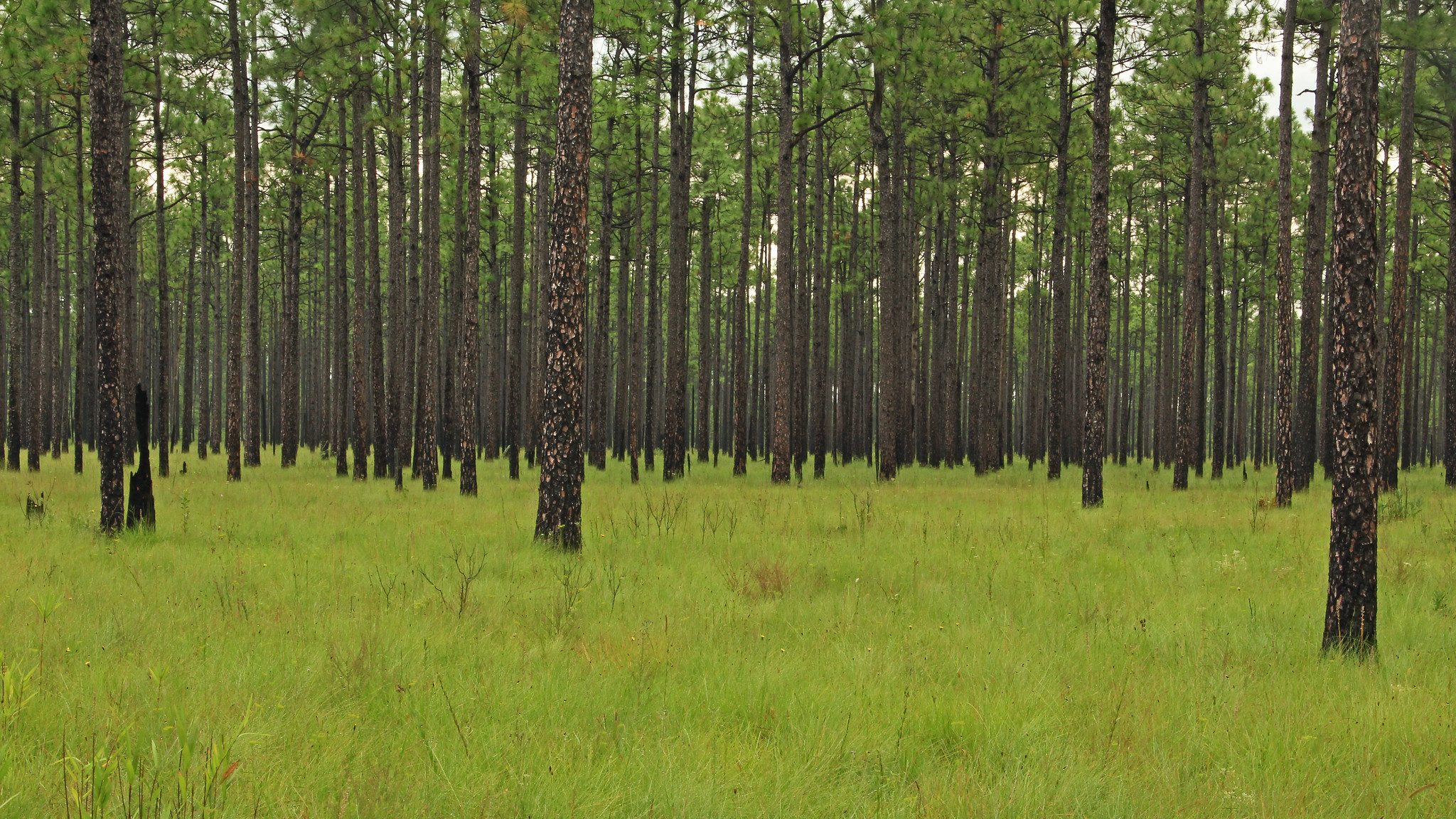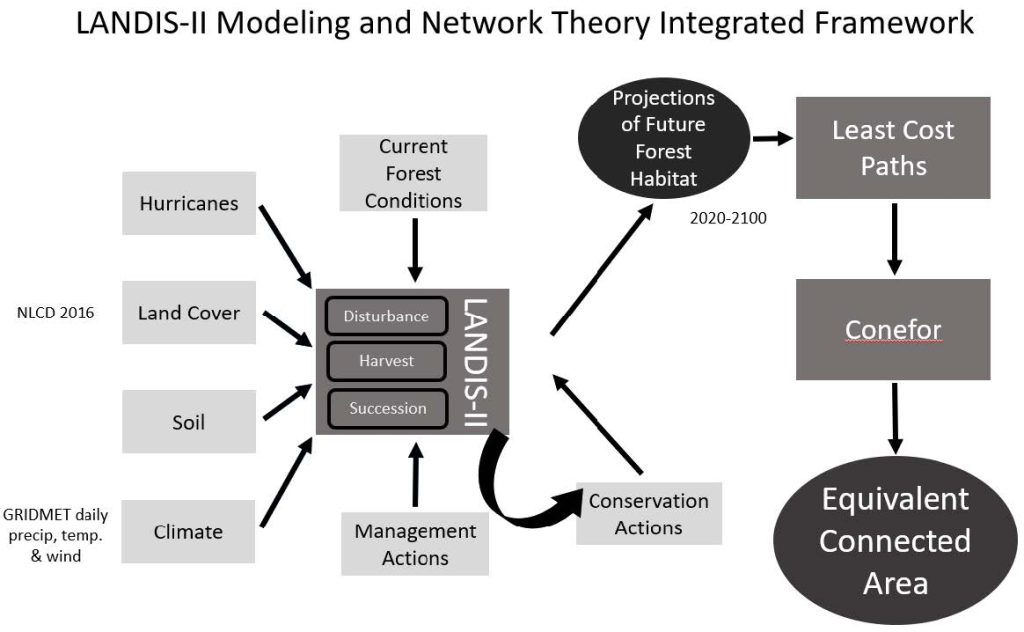Conservation Strategy Selection Influences Future Landscape Connectivity

A new publication, Forecasting the influence of conservation strategies on landscape connectivity, authored by 2018-19 SE CASC Global Change Fellow, Tina Mozelewski, was released in the journal, Conservation Biology on Feb. 24, 2022. SE CASC Faculty Affiliate Robert Scheller was a co-author to the article. The following summary was written by lead author Tina Mozelewski, currently a postdoctoral scholar at the Northeast Climate Adaptation Science Center.
We know that habitat loss and fragmentation threaten global biodiversity and drive extinction. Because of this, maintaining and enhancing landscape connectivity has been emphasized by conservation organizations and land managers to reduce the adverse effects of fragmentation and facilitate species ranges shifts in response to climate change.
The creation of new protected areas can enhance landscape connectivity, but the design of protected area networks can differentially impact the degree of connectivity, especially when multiple species are taken into consideration. With escalating conservation demands, understanding which protected area network designs are more likely to facilitate landscape connectivity is critical both to enhance benefits to biodiversity and to use limited conservation resources more effectively.

In this study, we developed a multi-model approach to evaluate the connectivity contributions of different strategies for protected area network design prior to on-the-ground implementation. Doing so allowed us to incorporate landscape dynamics, study connectivity outcomes for a longer period of time, and incorporate multiple species for one of the largest connectivity assessments of its kind.
Our study focused on central North Carolina, an area of significant conservation interest because of its numerous endemic and imperiled plant and animal species. We assessed the connectivity generated by four different protected area network design strategies: 1) acquiring land adjacent to established conservation areas, 2) acquiring land as cheaply as possible at a greater rate of acquisition, 3) maximizing the acquisition of geodiverse lands, and 4) acquiring land opportunistically.
We found that protected area network design substantially impacted connectivity for some species while having negligible impacts for others. For species where protected area design strongly dictated landscape connectivity, establishing protected areas adjacent to existing conservation land resulted in the greatest connectivity gains. Acquiring the cheapest land resulted in the lowest connectivity improvements, even when enabled a greater rate of acquisition.
These findings can support conservation and connectivity planning in central North Carolina, helping managers looking to prioritize the strategy that best meets the connectivity needs of their focal species. More broadly, we’ve introduced a way to evaluate trends in conservation strategy performance prior to implementation. This framework could be broadly applied across many landscapes and conservation alternatives, helping decision makers prioritize efforts under limited resources.
The article, Forecasting the influence of conservation strategies on landscape connectivity, was first published in Conservation Biology on 24 Feb 2022. Authors are Tina J. Mozelewski, Zachary J. Robbins, and Robert M. Scheller. https://doi.org/10.1111/cobi.13904
- Categories: